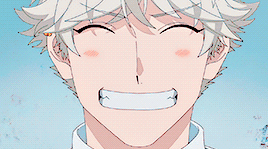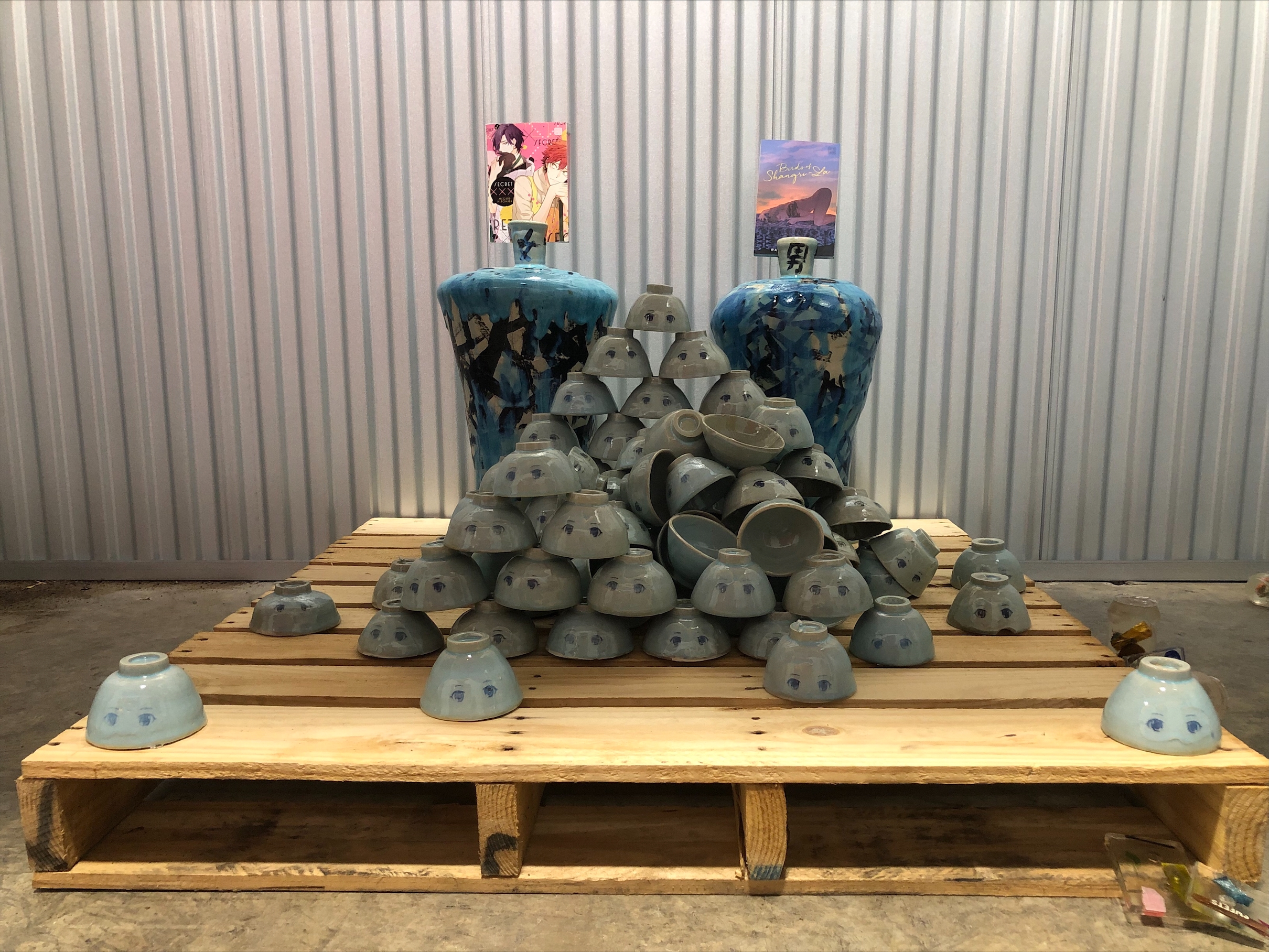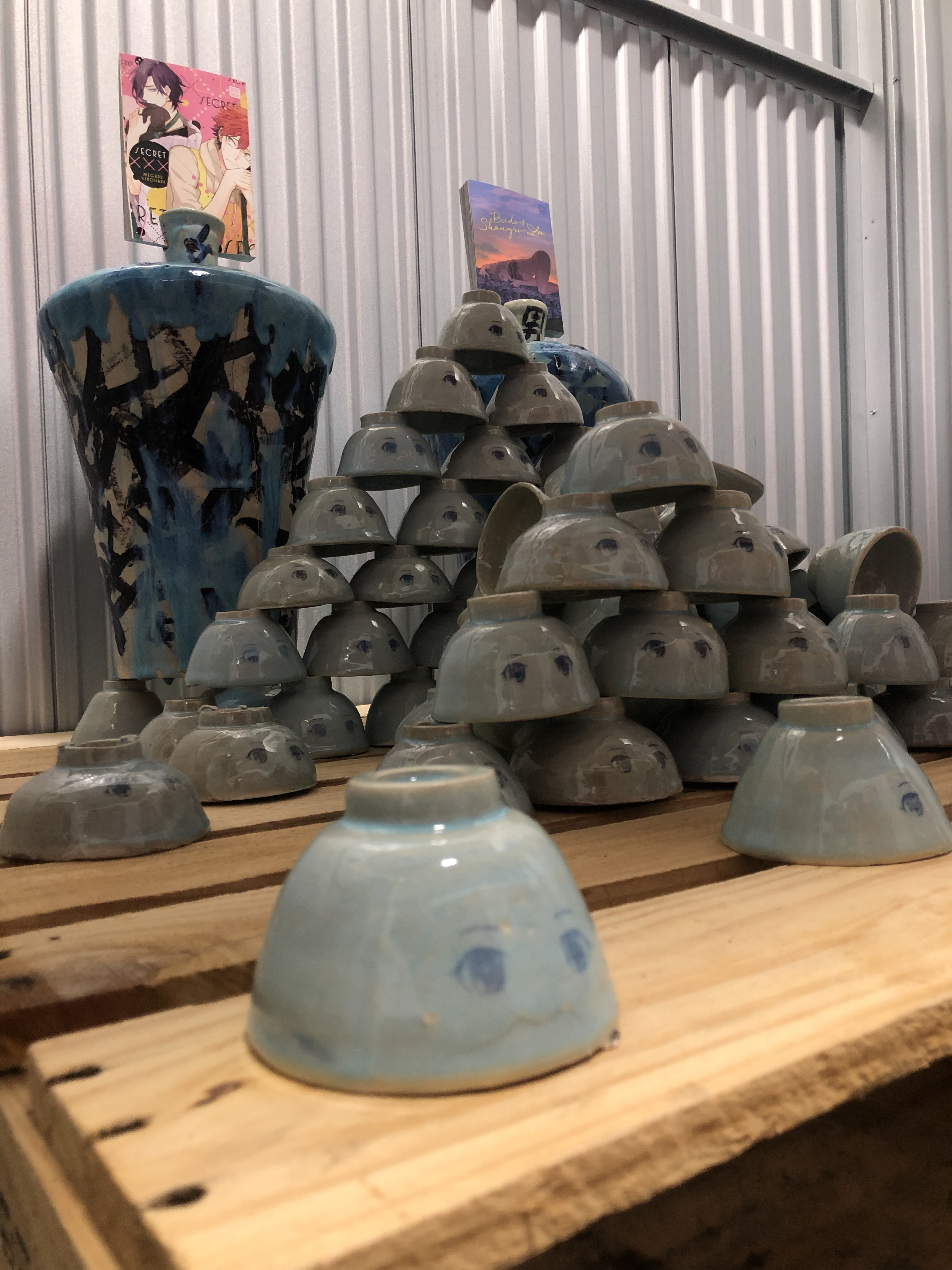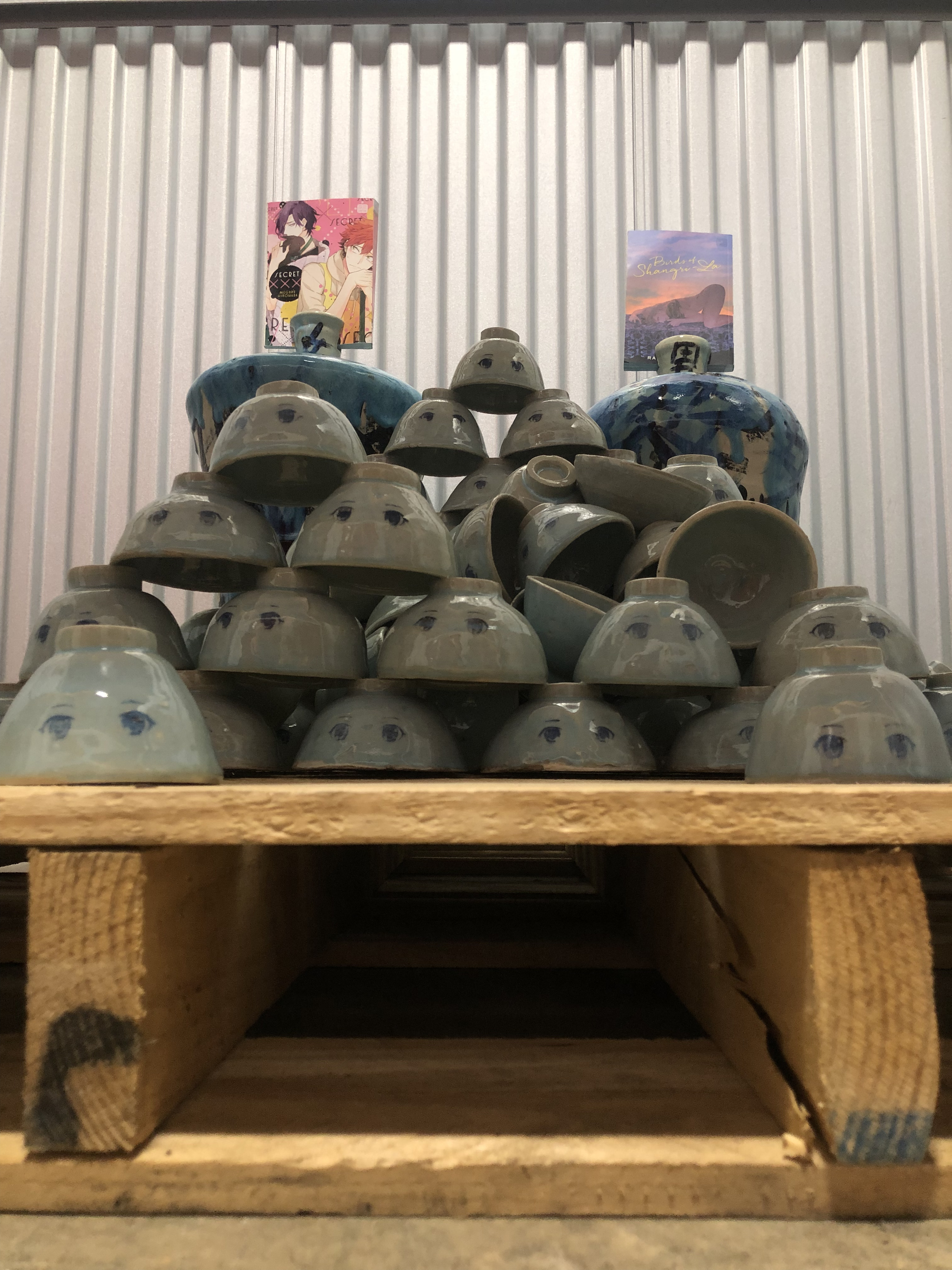I am an art history undergraduate student who minors in queer art. In this minor I have focussed on studying queer theory and queer art, but I have also tried to learn what it means to make queer art and these are my attempts. I haven't made that much and I love ceramics and yaoi. Love!

Art Made
Aidia.Pink, Artist
Gaze/Shizen




early 2022, ceramic vessels, glaze, found materials
Gaze/Shisen Is about the various distances found within my experience studying Asian art histories and Yaoi/Boy’s Love creators' production of manga. Yaoi/BL is a subgenre of Japanese manga which depicts male-male romance, sex, and socialitiy and is made primarily for a straight woman audience typically by striaght women authors. As I study art history, I inevitably create numerous narratives and conclusions within my research and coursework, which undoubtedly have their own widespread impact. I find that these distances (geographic, social, and gendered), which are created by a lack of first-hand knowledge regarding both myself and yaoi creator’s experiences, can create positive, negative, as well as generative creations. Gaze/Shisen is a critical and celebratory investigation of viewing and being viewed by these various subject positions and their creative products.
Untitled





late 2022, grolleg porcelain ceramic vessels, celadon glaze, my yaoi collection, digital projection
My work is interested in the way distance is a form or tool for war. Specifically, I think of this in the context of my relationship to Japanese contemporary pop-culture. I have been a long-time fan of anime and an avid reader of yaoi. This engagement with Japanese pop-culture (as well as other forms of Japanese culture such as karate in elementary school or Japanese art history in high school) may seem relatively innocuous, but the Japanese state has long understood the value of soft power for furthering Japan's power on a global stage. My access to Japanese culture (as compared to access to other place's cultural products) did not occur in a vacuum and is partially influenced by the intentional and specific agendas of the Japan's government.
However, yaoi and Japanese pop-culture make up and helped establish a vital part of my identity as a gay Southerner, especially with the lack of media depicting homoromantic/erotic relationships present within my youth in the conservative South. There is another distance present and that is between me and yaoi authors. Yaoi authors are predominantly Japanese straight women writing for a Japanese straight audience. Yet, I identify with the visual representations of gay men despite them being made by a person who is so distant from me: physically, culturally, and in terms of gender/sexual identification. Yet, I see this distance as having several potential outcomes. I see my art practice as nurturing and investigating these distances rather than exacerbating them to create war or forms of othering. My work seeks to visually combine primary examples from my favorite yaoi with my appreciation of Japanese art history to investigate the many systems of power which make up my identity (Japan's government's soft power tactics, my position as an American white man, etc.). I also intentionally appropriate the yaoi texts to ponder the subject position of the authors of yaoi whom I love for the amazing creations I consume, but who also exist in a complex system of power in relation to depicting gay men in visual culture/representation. Yaoi authors (mainly straight women) render gay relationships which oversimplify and fetishize gay men. However, these narratives are also fantasy and provide a subversive form of meaning making for these women in a sexist world which seeks to constrain their fantasies to that of the patriarchal or heteronormative. These various distances and their complications are what I seek to investigate in my work.